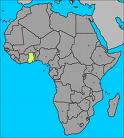A week ago Tuesday I had the fortune to accompany two of my UM research friends on their facility assessments in
They finished the referral hospitals, and this week began going to maternity homes that refer women to KATH. Maternity homes are privately-operated, usually small clinics that offer any where from just a few services such as antenatal care (ANC) and standard vaginal delivery (SVD), to an extensive array of services including prevention of maternal to child transmission of HIV (PMTCT), voluntary counseling and testing (VCT) for HIV and other STIs, circumcision, ANC, nutritional counseling, family planning etc.
We managed to visit 6 maternity homes in as many hours on Tuesday. It was striking to see the variety of maternity homes in terms of patient capacity, services offered, equipment available (and actually working), overall cleanliness and amount of good lighting. Most of the smaller ones we visited saw very few pregnant women each year, and delivered maybe just five babies in that time. Why would a midwife choose to open such a small maternity home that sees so few patients each year, and how does she manage to stay in business if she is receiving so little money?
I don’t have to look farther than our hospital to understand the first question: at KATH the midwives work double shifts, have a head midwife to report to, witness numerous deaths of their patients, and are paid very little for their physical and emotional contributions. Like anyone who dreams of opening their own business, the prospect of being one’s own boss is enticing, and as I can imagine, so too is the knowledge that one won’t have to be around so much death and suffering (because they immediately refer any women with pregnancy complications to our hospital).
However, the monetary factor is far more complex and I’m trying to get a better grasp of how it works. Three years ago the government of Ghana implemented a National Insurance Scheme, in which all health care facilities had to register with the government and pay a fee in order to be eligible to receive the insurance funds from their patients. And of course all Ghanaians were eligible for insurance, provided they could pay the “small” fee. Now if the individual hospital/maternity home/private clinic does not register with the
Now this all began three years ago, and there still remain a large number of health care facilities that are. But even for those who do register, the government is often months behind in paying the facility the insurance money owed, so that the health care workers end up paying out of pocket for medicine for their patients.
Hence a number of the maternity homes hadn’t actually delivered any women in the past couple of months to even the past year, and had provided antenatal care to only a handful.
As for the question of how such a place can remain open…I have no idea. Except that if the center is only employing one person besides the midwife who opened it, her costs would be pretty low beyond the rent.
What really struck me was that every midwife we interviewed said she immediately refers patients with any obstetric complication – eclampsia, haemorrhage, obstructed labor etc – to KATH where we work. Komfo Anokye Teaching Hospital where I work is incredibly overcrowded, with patients we’ve interviewed often waiting overnight for care. Furthermore, it is also considered by many in
These two factors are really difficult to overcome simultaneously, which is really how they must be approached. Timing in obstetric complications really is everything. For instance, a woman with high blood pressure who is immediately referred to KATH from a maternity home may arrive at our hospital only to wait outside overnight, and during that time develop pre-eclampsia and then have a seizure…whereas if she had been kept at the maternity home and given basic BP medications to see if her condition would improve, she would have gotten much better care without delay. Conversely, if for instance a woman is not progressing through labor and she is kept at a maternity home while they wait and see, her obstructed labor may cause internal bleeding and her uterus to rupture, whereas if she had been referred to KATH she would have been given a c-section before that could happen.
Thus KATH where we work is overcrowded with patients who either could have been treated elsewhere, or who have been referred too late and often do not survive. Any intervention must tackle both of these problems, either by organizing education workshops for midwives of maternity homes or going out to each facility. Most of the maternity homes Brooke and Tina have gone to do in fact have magnesium sulphate to control pre-eclampsia, but have not used it and instead referred straight to KATH. And for those that don’t, a greater effort needs to be made to equip health centers with such life-saving drugs.
It is often a fine line between whether a patient should be given care and wait to be referred unless absolutely necessary, or to err on the “safe side” by referring to KATH where the overcrowded conditions may not allow for the best of care and patients not in serious condition take up valuable space.












No comments:
Post a Comment